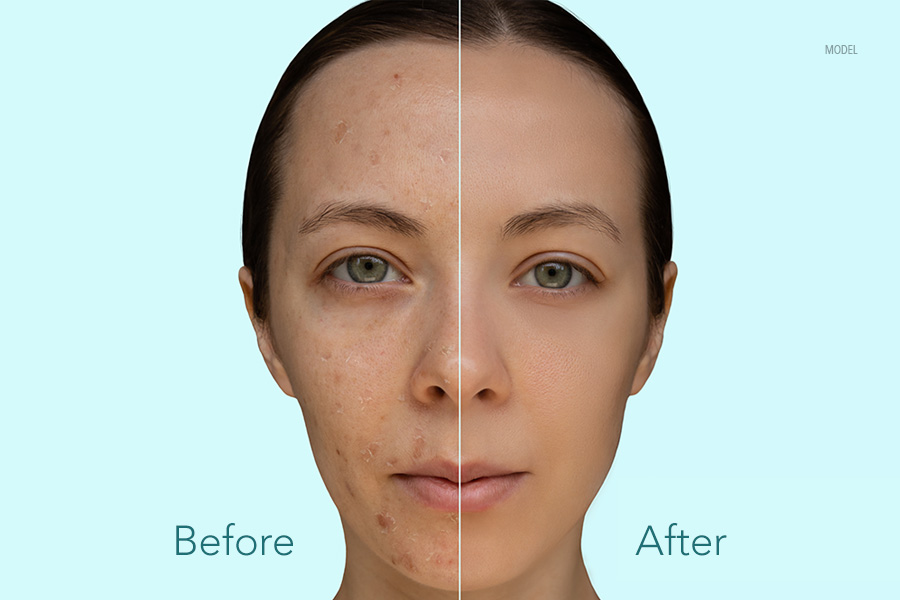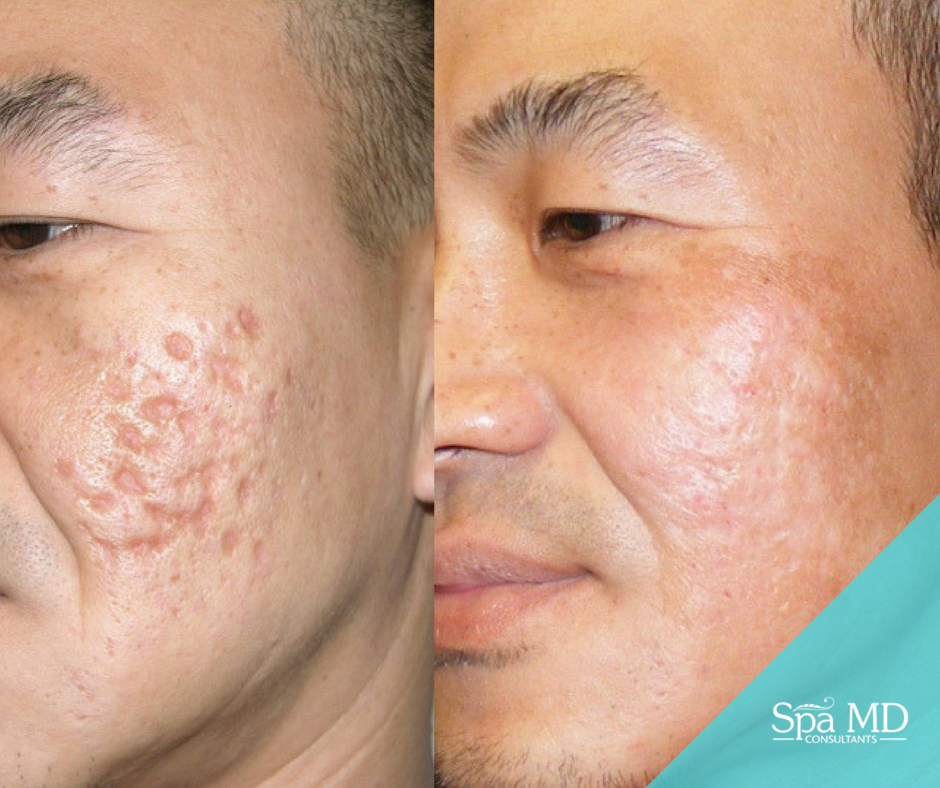An Unbiased View of Acne Scars
An Unbiased View of Acne Scars
Blog Article
Our Acne Scars Ideas
Table of ContentsAbout Acne Scars9 Simple Techniques For Acne ScarsNot known Facts About Acne ScarsAcne Scars Fundamentals ExplainedSome Known Details About Acne Scars
Increased acne marks happen when the body generates as well much collagen and develop a visible bump. As we age, acne scars become extra noticeably because our skin loses collagen.An individual hold-ups treatment for inflammatory acne. The longer you wait to seek treatment for acne, the better the threat of scarring. An individual selects at, presses or stands out acne. When standing out a pimple, you push germs deeper into pore. If we didn't need one more reason that not to pop a pimple, recognize that a scar can be the direct outcome of your activities.
Your hereditary makeup plays a big duty in exactly how much acne, and what kind of acne you may create. As we said earlier, there is no magic component to take acne marks away in the blink of an eye. There are therapies offered that aid decrease the scarring gradually.
, a skin specialist might lift the scar, bringing it closer to the surface area of the skin to make it less obvious. Resurfacing eliminates layers of the skin, which enables the body to generate new skin cells.
Acne Scars for Dummies
best for all kinds of acne marks. Lasers and other light therapies can treat increased scars securely and successfully. Treatment with a pulsed color laser (PDL) can assist reduce the itch and discomfort, decrease color, and squash an increased mark. For people with lighter skin, intense pulsed light (IPL) also might be a treatment alternative.
After 3 needling treatments, there was improvement in the look of acne marks over time contrasted with the control group, with marginal discomfort reported - acne scars. Treatment of acne scarring remains a therapeutic challenge, with treatment strategies that include a range of feasible choices.
Nonablative and ablative lasers can be made use of to either remove or perforate skin in a penalty determine pattern, with resulting neocollagenesis; only a fraction of the skin is treated with each treatment, and a series of therapies are needed to deal with the whole damaged surface area. It has been recommended that neocollagenesis and renovation of acne marks can additionally be accomplished utilizing needle rollers, which use a mechanical, macroscopic method to cause tiny epidermal and facial perforations.
Excitement About Acne Scars
Like paint rollers, such devices can be moved back and forth along the skin. Needling as a feasible treatment for acne scarring was presented by Camirand and Doucet, who defined usage of a tattoo weapon to abrade acne scars. Fernandes,6 ultimately asserted that needling with a roller led to percutaneous collagen induction.
At each of these sees, needling was executed on the study treatment area, and topical anesthetic was just massaged right into the control location. Digital pictures and negative occasions (eg, infection, prolonged erythema, extended edema, serosanguineous drainage, bleeding, ulceration, erosion, and pigmentation), including their duration, he said resolution, intensity, partnership to the research study procedure, and any alleviative actions taken, were recorded before each treatment.

Discomfort level was taped based on a 10-point aesthetic analog scale after the procedure. Promptly after each therapy, mild hand-operated stress with gauze was looked for 5 minutes to regulate determine blood loss and product secretion. The skin was saturated with saline swabs for an hour to facilitate hydration while the people were informed regarding the requirement for home care.
Acne Scars for Dummies
The device was then additional cleansed by gas sanitation, saved in a shut plan, and classified with the participant's name and the very first treatment day on the box up until the following therapy. This sterilization procedure was complied with to ensure a high level of infection control in this study setup. The primary outcome measure was the quantitative worldwide scarring grading system, developed by Goodman and Baron.
Two blinded skin doctors (S.H. and M.P.) individually rated participants' acne marks based on common electronic pictures acquired at baseline and at the 3-month and 6-month follow-up sees. Forced arrangement was used to integrate ratings. Offered that this was an early pilot test, we considered it ideal to take into consideration acne marks collectively, not separately, by various morphologic subtypes (eg, rolling, boxcar, ice choice, and more).
and M.P.) did not join randomization or treatment and consequently had the ability to be blinded pertaining to see this site assignment. Changes in mean mark scores from standard to 3 and 6 months, specifically, were calculated for the therapy and control arms. Repeated-measures analysis of difference with pairwise contrasts with Sidak change were performed to check whether the mark score varied on therapy kind, time, or the interaction in between both.
The Wilcoxon signed rank examination was used to analyze whether the distinction in total acne mark look was connected with therapy type. Twenty people consented, and 5 dropped out before the initial treatment.
An Unbiased View of Acne Scars
At 3 months compared to baseline, the decrease in scar rating in the needling team was nonsignificant (mean difference, 2.4, 95% CI, 0.01 to 4.8; P =.052) (Number 3). The needling treatment was not specifically agonizing. The mean discomfort rating was 1.08 of 10. Pain rankings raised somewhat over time (P =.01), with week 4 pain rankings (mean, 1.75; 95% CI, 0.90-2.60) significantly greater than week 2 (mean, 0.78; 95% CI, 0.40-1.20) and week 0 (mean, 0.71; 95% CI, 0.40-1.00).
When asked to approximate the discomfort experienced during and in the days after their treatment, participants generally reported no pain (acne scars). Most individuals were very completely satisfied with their procedure, responded indeed when asked if they would do this treatment once again to treat extra marks, and claimed they would suggest needling to their good friends
Light transient erythema and edema, which were not categorized as unfavorable events and hence not formally tracked, were regularly observed by the investigator (M.A.) and reported by individuals after treatments. This study discloses some renovation in acne scars after a collection of 3 treatments of needling. There is a statistically substantial renovation in such scars in the treatment team from standard to 6 months and no substantial renovation throughout this period in the control team.

Report this page